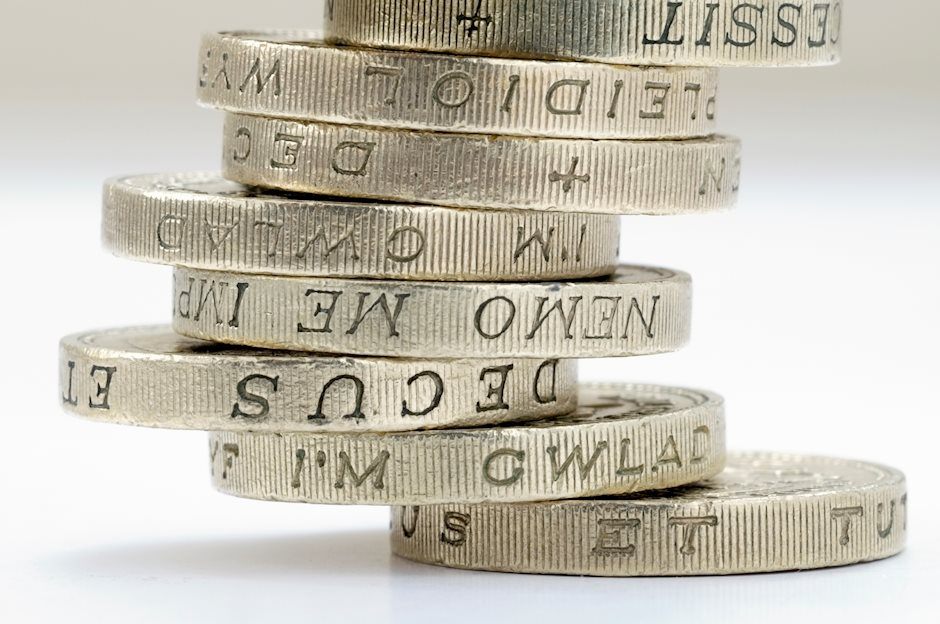Pound Sterling pulls back after CPI-inspired rally, trades in lower 1.26s
- Pound Sterling vs US Dollar surges after US CPI data but then gives up gains to trade back down near 1.2600.
- US headline inflation numbers came out at a lower-than-expected 4.9% pace on a YoY basis.
- The data gives the broader long-term GBP/USD uptrend impetus to extend.

The Pound Sterling (GBP) rallied sharply versus the US Dollar (USD) after the release of US Consumer Price Index (CPI) data for April on Wednesday. The pair failed to hold onto its gains, however, and pulled back down to near the 1.2600 level during the latter part of the US Session.
That said, the GBP/USD pair is in a bullish long-term technical uptrend, advantaging long over short holders.
GBP/USD market movers
- US CPI inflation dips to 4.9% YoY in April, missing expectations of 5.0%. This reflects slowing inflationary pressures, and counter-intuitively weakens the US Dollar (strengthening the GBP/USD), as it makes it even more likely the Federal Reserve (Fed) will leave interest rates unchanged.
- The Pound gains versus the US Dollar due to a widening monetary policy divergence since in the UK interest rates are still expected to rise substantially higher, and currencies that have higher interest rates to benefit from greater demand.
- Apart from the headline YoY figure, the CPI release came out as expected: rising by a faster 0.4% rate MoM in April, and for Core CPI rising 0.4% MoM and 5.5% YoY.
- The Pound Sterling will be impacted by the outcome of the Bank of England (BoE) policy meeting on Thursday. A 25 bps interest rate hike is now expected with almost 100% certainty. What is less certain is the bank’s forward guidance, BoE Chairman Andrew Bailey’s comments in the press conference, and the distribution of member votes.
- The distribution of voting at the BoE’s last meeting was 7-2, with seven policymakers voting for a 25 bps rate hike and two voting for no change. If the distribution changes either way that will impact GBP with a decrease in the ‘no-change’ camp lifting GBP/USD and vice versa for an increase.
- US Treasury bond yields have risen for four consecutive days, providing the US Dollar with some support, but yields are pulling back slightly on Tuesday, which could be a slight headwind for the USD.
GBP/USD technical analysis: New leg in uptrend begins
GBP/USD broadly keeps extending its established uptrend making progressively higher highs and higher lows, and this is likely to continue favoring Pound Sterling longs over shorts.
The shooting star Japanese candlestick reversal pattern on GBP/USD that formed on Monday at the new year-to-date (YTD) highs has failed to obtain confirmation. Tuesday’s bullish close shows a lack of bearish follow-through and severely reduces the validity of the reversal. The surge post-CPI has now almost reclaimed the YTD highs and further invalidated the pattern.
Given the overall trend is bullish, the exchange rate is likely to continue rallying. The May 2022 highs at 1.2665 provide the first resistance level, but once breached it opens the way to the 100-week Simple Moving Average (SMA) situated at 1.2713, and finally at the 61.8% Fibonacci retracement of the 2021-22 bear market, at 1.2758. All provide potential upside targets for the pair. Each level will need to be decisively breached to open the door to the next.
Decisive bearish breaks are characterized by long daily candles that break through key resistance levels in question and close near their highs or lows of the day (depending on whether the break is bullish or bearish). Alternatively, three consecutive candles that break through the level can also be decisive. Such insignia provide confirmation that the break is not a ‘false break’ or bull/bear trap.
It would require a decisive break below the 1.2435 May 2 lows to challenge the dominance of the uptrend and suggest the chance of a bear reversal.
The Relative Strength Index (RSI) is in the mid 60s at the time of writing after peaking in the upper 60s on May 5. This suggests a mild bearish divergence may be developing. If RSI remains below 68 at Wednesday’s close it will confirm a bearish divergence and indicate some underlying weakness. This alone, however, would not be enough evidence to conclude a reversal was in the making.
Inflation FAQs
What is inflation?
Inflation measures the rise in the price of a representative basket of goods and services. Headline inflation is usually expressed as a percentage change on a month-on-month (MoM) and year-on-year (YoY) basis. Core inflation excludes more volatile elements such as food and fuel which can fluctuate because of geopolitical and seasonal factors. Core inflation is the figure economists focus on and is the level targeted by central banks, which are mandated to keep inflation at a manageable level, usually around 2%.
What is the Consumer Price Index (CPI)?
The Consumer Price Index (CPI) measures the change in prices of a basket of goods and services over a period of time. It is usually expressed as a percentage change on a month-on-month (MoM) and year-on-year (YoY) basis. Core CPI is the figure targeted by central banks as it excludes volatile food and fuel inputs. When Core CPI rises above 2% it usually results in higher interest rates and vice versa when it falls below 2%. Since higher interest rates are positive for a currency, higher inflation usually results in a stronger currency. The opposite is true when inflation falls.
What is the impact of inflation on foreign exchange?
Although it may seem counter-intuitive, high inflation in a country pushes up the value of its currency and vice versa for lower inflation. This is because the central bank will normally raise interest rates to combat the higher inflation, which attract more global capital inflows from investors looking for a lucrative place to park their money.
How does inflation influence the price of Gold?
Formerly, Gold was the asset investors turned to in times of high inflation because it preserved its value, and whilst investors will often still buy Gold for its safe-haven properties in times of extreme market turmoil, this is not the case most of the time. This is because when inflation is high, central banks will put up interest rates to combat it.
Higher interest rates are negative for Gold because they increase the opportunity-cost of holding Gold vis-a-vis an interest-bearing asset or placing the money in a cash deposit account. On the flipside, lower inflation tends to be positive for Gold as it brings interest rates down, making the bright metal a more viable investment alternative.
Author

Joaquin Monfort
FXStreet
Joaquin Monfort is a financial writer and analyst with over 10 years experience writing about financial markets and alt data. He holds a degree in Anthropology from London University and a Diploma in Technical analysis.
-638193254332793749.png&w=1536&q=95)
















